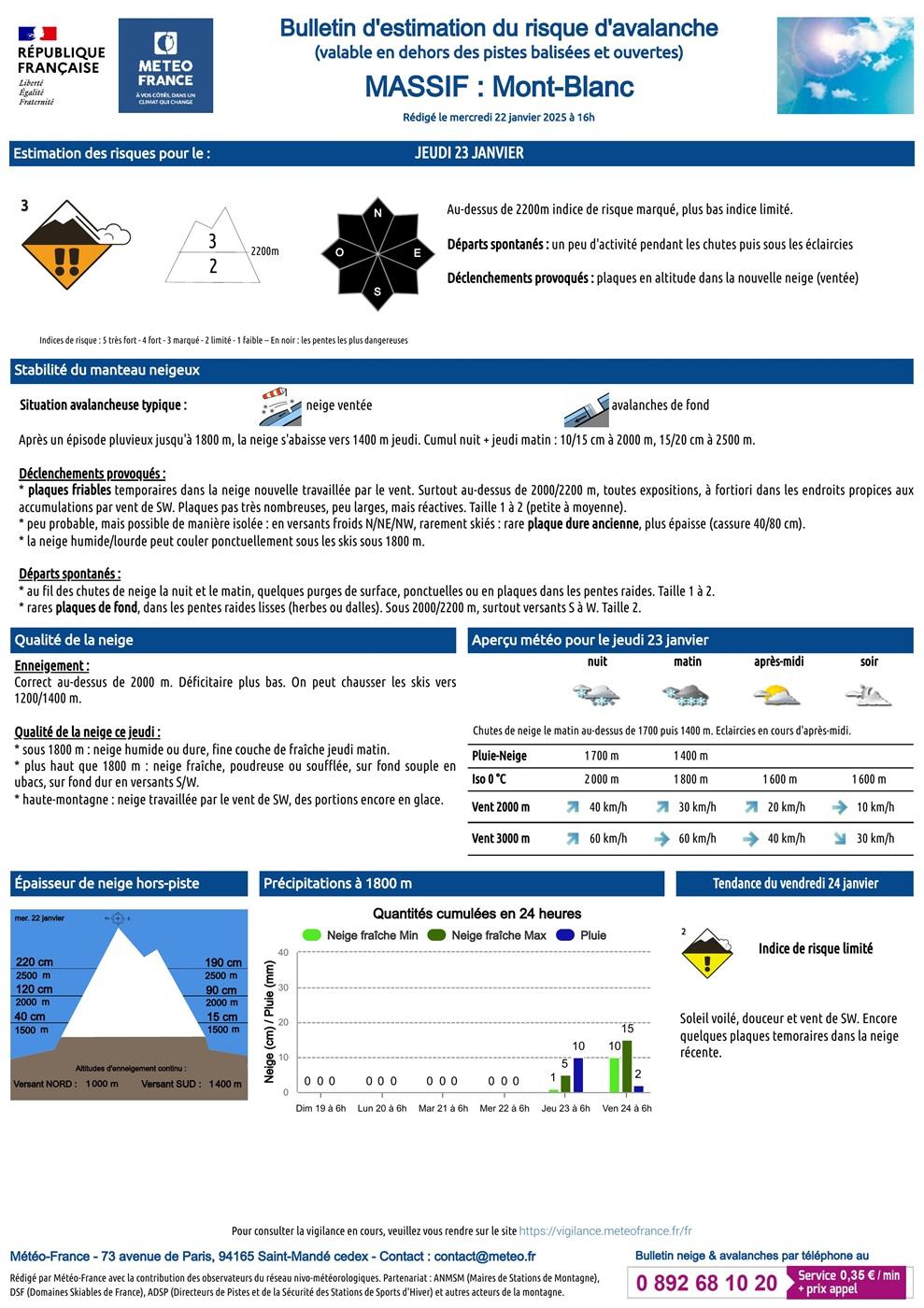How to Interpret and Understand an Avalanche Bulletin
The avalanche bulletin or avalanche report is a key document for getting ready for ski touring, splitboarding, freeride skiing or snowboarding, or any other winter mountain activity. It helps assess avalanche risks and adapt your route accordingly. Here’s how to read and interpret it:
Avalanche Risk Level
The risk level is rated on a scale of 1 to 5:
- 1 (Low): Generally stable conditions.
- 2 (Moderate): Some risk on steep slopes.
- 3 (Considerable): Significant risk—be cautious on steep slopes.
- 4 (High): High risk, spontaneous avalanches likely.
- 5 (Very High): Maximum risk, widespread danger.
In this example, the risk is 2 (Moderate) below 2200m and 3 (Considerable) above. This means extra caution is needed at higher altitudes.
Risk Areas and Slopes
A wind rose diagram highlights the most hazardous slope orientations (N, S, E, W). Here, all orientations above 2200m are affected, especially in areas with wind-drifted snow.
Snowpack Stability
The bulletin details the types of risks present:
- Wind slabs: Formed by wind in recent snow, they are unstable and can be triggered by a skier.
- Old hard slabs: Sometimes present on cold slopes (N, NE, NW). Rare but can cause large avalanches if they collapse.
- Wet avalanches: Less frequent but possible on steep, smooth slopes.
This analysis helps determine where specific dangers are concentrated.
Spontaneous and Triggered Avalanches
- Spontaneous avalanches: Avalanches that occur naturally, especially during snowfall or unstable conditions.
- Triggered avalanches: A weak snow layer can collapse under a skier's weight, causing an avalanche. Identifying these areas is crucial.
Snow Quality and Depth
Snow conditions are described by altitude and orientation:
- Below 1800m: Wet or hard snow, less enjoyable for skiing.
- Above 1800m: Fresh powder or wind-affected snow, unstable in some areas.
- High altitude terrain: Wind-affected snow, sometimes icy.
The bulletin also specifies the lowest altitude where snow coverage is continuous (e.g., 1200/1400m).
Weather and Precipitation Overview
Weather conditions have a strong impact on avalanche risk:
- Rain-snow limit: Indicates the altitude where precipitation turns to snow.
In this case, the limit drops to 1400 m, with clear spells expected in the afternoon. - Wind: Reported at 2000 m and 3000 m, as wind influences slab formation.
Example: 60 km/h winds at high altitude in the morning, decreasing to 30 km/h in the evening.
Forecast for the Following Days
The bulletin includes a forecast for upcoming days. Here, a moderate risk (level 2) is expected, but caution is still required due to temporary slabs.
Safety Tips for Interpreting the bulletin
- Adjust your plans: In case of considerable risk (level 3) or higher, choose safer routes—wooded areas, gentle slopes (<30°), away from snow accumulations.
- Be properly equipped: Always carry a transceiver, a shovel, and a probe. Knowing how to use them is essential.
- Stay informed: Check the latest forecasts before heading out and watch for warning signs (cornices, cracks in the snow).
- Get trained: Understanding terrain and snow behaviour requires experience and learning.
The avalanche bulletin is a valuable tool, but it does not replace common sense or direct observation of conditions. Always take a cautious approach—safety is the top priority in the mountains. To learn how to react in case of an avalanche, read our guide on how to conduct an avalanche victim search.

